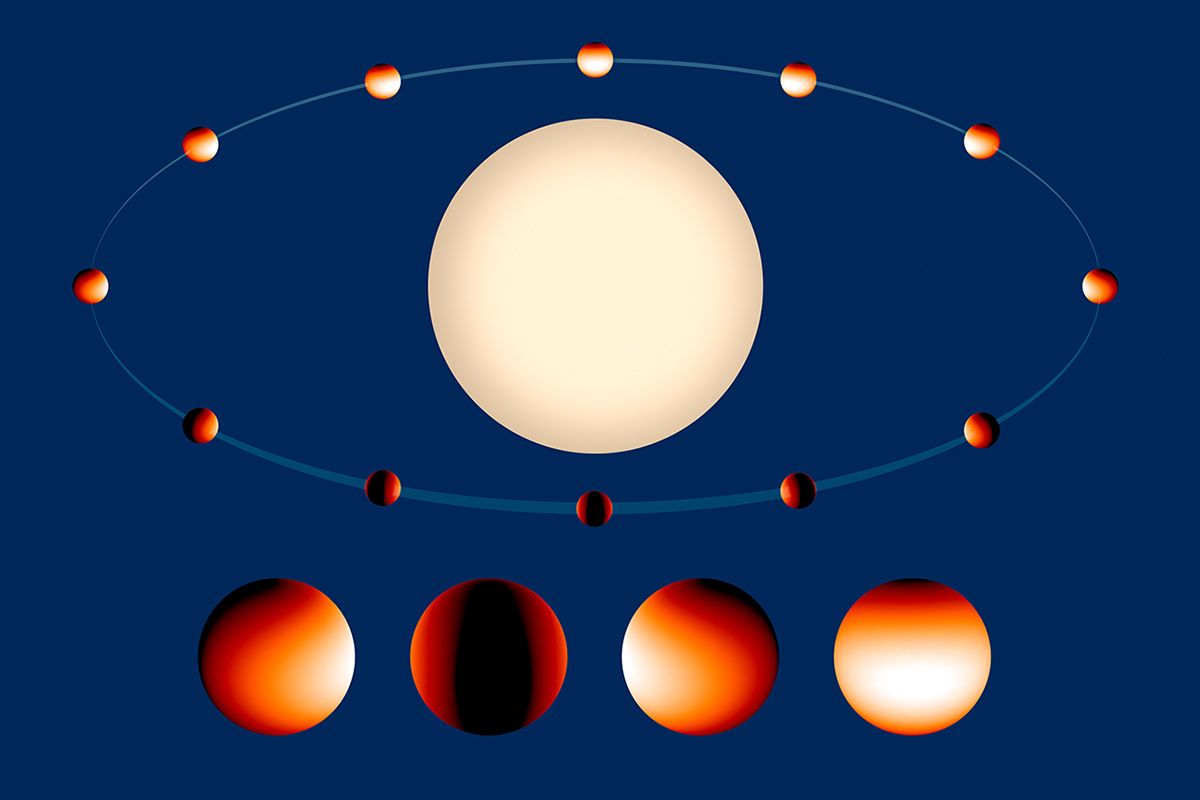The map provides information about temperatures at different layers of the world's atmosphere and traces the amount and distribution of water vapor on the planet. The findings have ramifications for the understanding of atmospheric dynamics and the formation of giant planets like Jupiter.

"These measurements have opened the door for a new kind of comparative planetology," said team leader Jacob Bean of the University of Chicago.
"Our observations are the first of their kind in terms of providing a two-dimensional map of the planet's thermal structure that can be used to constrain atmospheric circulation and dynamical models for hot exoplanets," said team member Kevin Stevenson of the University of Chicago.
The Hubble observations show that the planet, called WASP-43b, is no place to call home. It's a world of extremes, where seething winds howl at the speed of sound from a 3,000-degree-Fahrenheit day side that is hot enough to melt steel to a pitch-black night side that sees temperatures plunge below a relatively cool 1,000 degrees Fahrenheit.
As a hot ball of predominantly hydrogen gas, there are no surface features on the planet, such as oceans or continents that can be used to track its rotation. Only the severe temperature difference between the day and night sides can be used by a remote observer to mark the passage of a day on this world.
WASP-43b is located 260 light-years away and was first discovered in 2011. WASP-43b is too distant to be photographed, but because its orbit is observed edge-on to Earth, astronomers detected it by observing regular dips in the light of its parent star as the planet passes in front of it.
The planet is about the same size as Jupiter, but is nearly twice as massive. The planet is so close to its orange dwarf host star that it completes an orbit in just 19 hours. The planet is also gravitationally locked so that it keeps one hemisphere facing the star, just as our moon keeps one face toward Earth.
For a little more insight into the project see this:
http://hubblesite.org/newscenter/archive/releases/2014/28/full/
